Since 2021 the NordLink cable between Norway and Germany directly connects the German and Norwegian energy markets. Electricity from wind and hydropower is exchanged to ensure supply reliability, stable prices and a higher share of renewables in the energy mix.
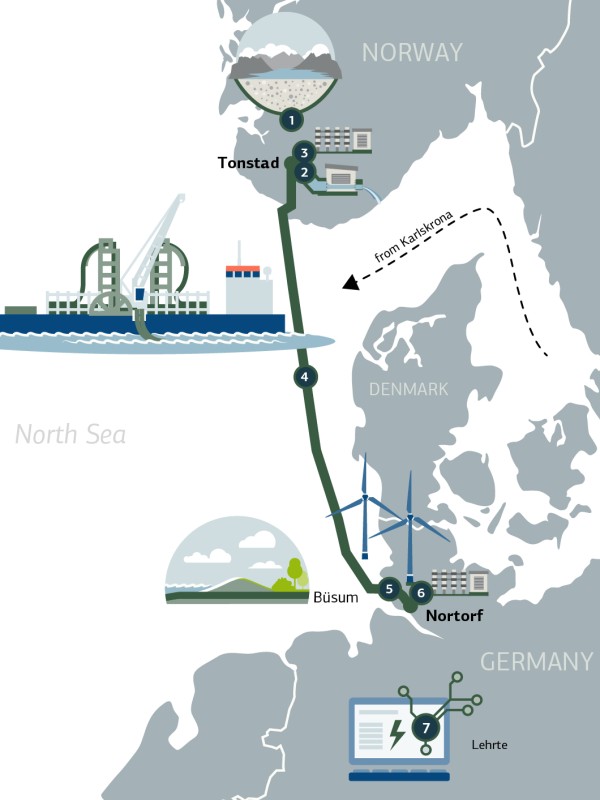
Stations on the NordLink journey
Svartevatn dam (1), where water begins its cascade above Tonstad. Sira-Kvina (2), hydropower plant in Tonstad. Generates energy for NordLink. Substation (3) in Tonstad and where the cable begins. NKT Victoria (4), loaded in Karlskrona, Sweden, it laid the German section of cable. Büsum (5), this is where the NordLink cable was pushed through the dyke to begin its journey on land. Nortorf (6) in Wilstermarsch is the site for the substation at the other end of the cable. Lehrte (7), this is where the German power grid is monitored
At an elevation of around 900 metres, the Svartevatn dam in southern Norway's granite massif holds back vast amounts of water. At first glance, the 1.4 billion cubic metres of water look peaceful and smooth behind the spectacular structure, which contains more stones than the Great Pyramid of Giza in Egypt. Upon closer inspection however, you can see a maelstrom at a spot near the edge where water plummets downward. This is the starting point of a cascade of reservoirs connected through subterranean pipelines that is over 75 kilometres long and drops 850 metres down. It leads to Tonstad’s Sira-Kvina power plant.
The plant was carved into the stone at the end of the 1960s and equipped with four turbines. It has the highest hydropower output in all of Norway with 3.9 billion kilowatt hours. Green electricity produced here now also flows into the German power grid.
On a high plateau a few hundred meters above the Tonstad hydropower plant, a new substation has been constructed to facilitate transport of a formidable 1,400 megawatts – this can supply 3.6 million households – through the sea to northern Germany. It is part of one of Europe's most important electricity hubs. Hydropower from this region has already been sent to Denmark or the Netherlands for years. In spring 2021, the then biggest power cable was completed, too: NordLink.
Stations on the NordLink journey
Svartevatn dam
It is not uncommon for Winter to come early or linger longer at the elevation of the Svartevatn dam while the valley below is green.
A more sustainable energy mix
“KfW's participation is a clear commitment to climate and environmental action - with the exchange of electricity from wind and hydropower made possible by the cable, we are creating security of supply and increasing the share of renewables in the electricity mix.
"We are proud to be involved and to have supported NordLink from planning to commissioning," says Velibor Marjanovic, Member of the Management Board of KfW IPEX-Bank. NordLink was commissioned in the presence of the then German Chancellor Angela Merkel and the then Norwegian Prime Minister Erna Solberg on 27 May 2021.”
NordLink was initiated around eleven years ago. “At that time we had a critical situation here in Norway,” says Stein Håvard Auno, then Project Director for NordLink at Statnett, the state operator of the Norwegian power system. “We had hardly any rain fall in autumn, and the reservoirs were nearly empty in the winter. We needed to import electricity from coal and nuclear power, which caused the energy prices to rise. In that way NordLink is important to Norway's energy security. It helps us keep our electricity prices stable even during dry seasons. And, as NordLink is a “green” cable, our energy mix is becoming more sustainable. In this way, we are making an important contribution to the energy transition in Europe.”
Supply security, stable prices, a faster energy transition – this triad also applies at the other end of the 623-kilometre-long double cable made of positively and negatively poled cables. The counterpart to the substation in Tonstad is in Schleswig-Holstein in the town of Nortorf near Wilster. Converters manufactured by ABB, which convert the alternating current obtained into low-loss direct current for transporting it through the cable and change it back into alternating current at the end, are at the heart of the two substations which count among the most powerful substations in the world. Around three metres above the ground of the converter facility, the silver valves hang on steel cables like precious shrines. They contain the newest generation of a technology that experts call VSCHVDC: high-voltage direct current power transmission in self-commuted power converters.
Read more under the illustration.
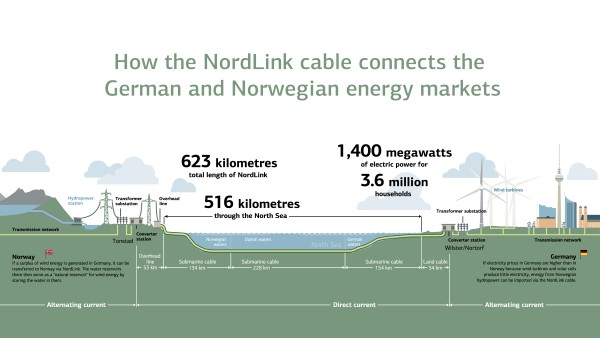
The key to a successful energy transition
On the German side, the power grid is maintained by the Dutch-German electricity grid operator TenneT, says Gunnar Spengel who at the time was the Project Manager for NordLink. “NordLink connects two renewable energy sources that optimally supplement each other,” Spengel says. “Depending on the market situation, a surplus of wind energy can be exported to Norway. Or, if the wind calms in Germany, we can import hydropower from Norway. NordLink thus contributes to reciprocal supply security.” However, Spengel goes on to say, the direction the electricity flows is largely determined by the electricity market. It can be assumed that the exporting party is the one with the cheaper price at the time.
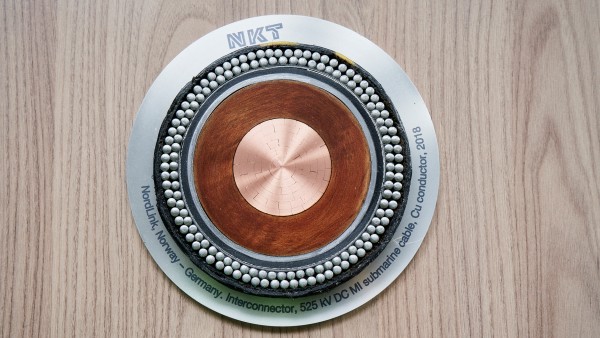
Cross-section through the 13 centimetre NordLink cable. Inside the copper core, next to it the insulation with a thick layer of oiled paper.
The team at TenneT is able to see how much power flows in which direction from the control room in Lehrte near Hanover. TenneT's entire German power grid is controlled from there, whereby energy flow is automated to a great extent during normal operation. The final destination of the Norwegian power coming from the NordLink cable, whether it is used in Hamburg, Frankfurt or Dresden, cannot even be identified in Lehrte. Shortly after its arrival within a matter of seconds in Nortorf, the power generated by Norway's cascading waters is used in the German electricity grid. And the same applies in the other direction: it is impossible to specify which of the approximately 30,000 German wind turbines produced power for Norway.
A special type of cable makes this exchange technically possible. The 13-centimetre thick and 50-kilogram-per-metre cable consists of tailored components that make it particularly robust and conductive. The electricity itself flows through a massive core made of copper. This is insulated and protected by a wide layer of paper saturated with oil. It also has a casing of steel wire and different plastics. The cable is made in the production halls of two companies. The French company Nexans manufactured in Norway and then laid the Norwegian section of NordLink; NKT from Karlskrona in southern Sweden contributed the cable for the German side.
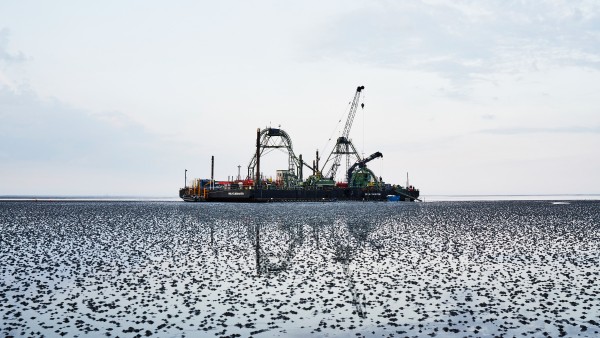
516 kilometres of cable were laid through the North Sea, in part through the mud flats.
Staff are proud of the forward-looking project
“There is a lot of pressure on the project, to be sure, because this is the first time we are doing some things in these dimensions and there is a lot of attention on us,” says Gerd-Wolf Balk, then Senior Vice President at NKT. “But I feel good about working on a future-oriented project, on a new generation of energy and energy transmission. Also, our cables symbolise that our future will only be a success if we work towards it together.”
850 people work at NKT in Karlskrona, half of them in cable manufacturing. Per shift 25 people were involved in around-the-clock production for the NordLink cable. From the summer of 2016 until February 2019, 208 kilometres of the mass-impregnated 525-kilovolt cable was produced. 54 kilometres of it are in the ground in Northern Germany, 154 kilometres are underwater in Germany's territorial waters; Nexans laid an additional 362 kilometres in the Danish and Norwegian parts of the North Sea.
NKT Management needed to obtain many more approvals for the land route than the sea route. In Schleswig-Holstein, the interests of nearly 100 affected parties needed to be taken into account between the landing in Büsum and the substation in Nortorf, and countless authorities needed to be consulted. Laying the cable in the sea, which was associated with environmental requirements, only required one permit.
On the other hand, the underwater cable was more difficult to lay. Once the Norwegian part in the open sea was completed by the Nexans special ship, Skagerrak, NKT relied on their ship, the NKT Victoria, Offshore Construction Manager Tony Collins and a team of 75 experts. Everything on board of both ships is designed with the only intention to lay submarine cable. The most important aspect: the ships must be able to maintain their positions to minimise straining forces even in rough seas.
The NKT Victoria transported two NordLink sections measuring 60 kilometres each from Karlskrona in its slowly rotating cable carousel, cautiously lowering the cable over the curved stern into the water. The laying takes place at a very low speed of less than half a knot (about 0.9 km/h) - depending on weather and current conditions. The greatest risk to the power connection on the bottom of the North Sea is anchors and otter trawls. So the sea floor of the NordLink corridor, which is made up of sand and clay and has a maximum depth of 410 metres, was flushed out by around one and a half metres. Five crossings with cable running from East to West also needed to be protected.
Published on KfW Stories: 8 September 2020, last updated: 6 June 2022.
The described project contributes to the following United Nationsʼ Sustainable Development Goals
Goal 7: Ensure access to affordable, reliable, sustainable and modern energy
Close to 80 per cent of the energy produced worldwide still comes from fossil fuel sources. Burning fossil fuels also generates costs for the health system due to air pollution and costs for climate-related damages that harm the general public, not just those burning the fuel.

All United Nations member states adopted the 2030 Agenda in 2015. At its heart is a list of 17 goals for sustainable development, known as the Sustainable Development Goals (SDGs). Our world should become a place where people are able to live in peace with each other in ways that are ecologically compatible, socially just, and economically effective.

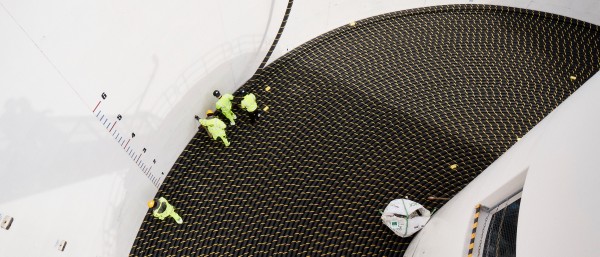
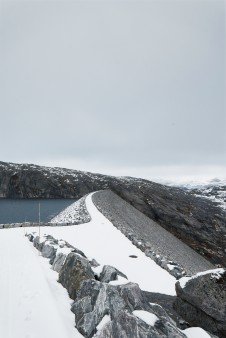
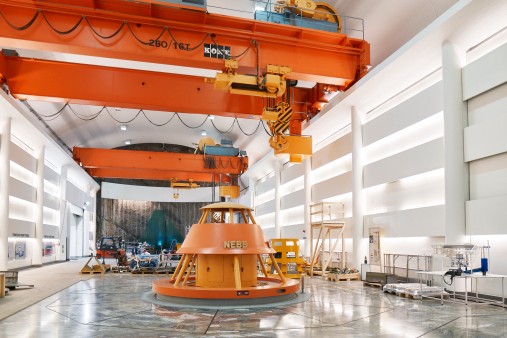
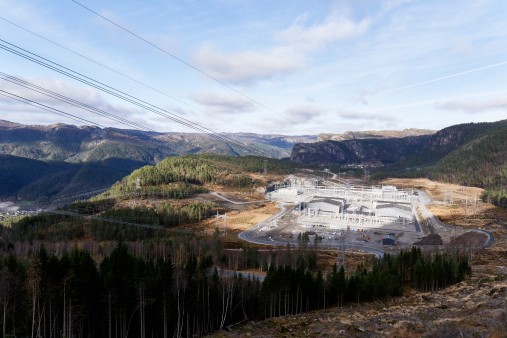
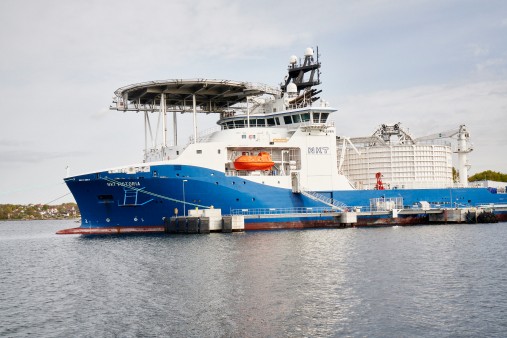
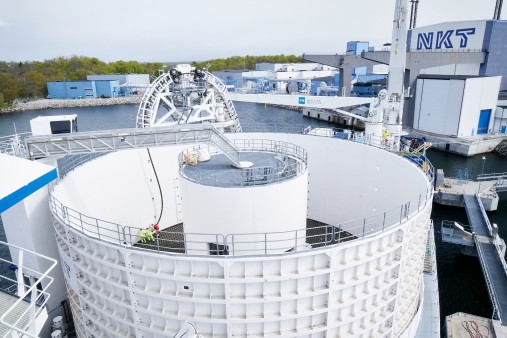
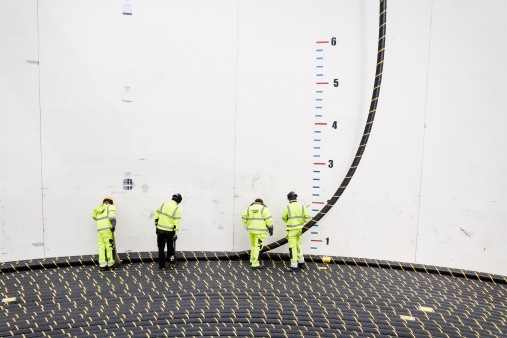
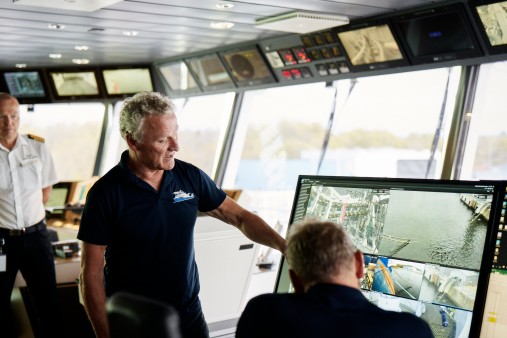
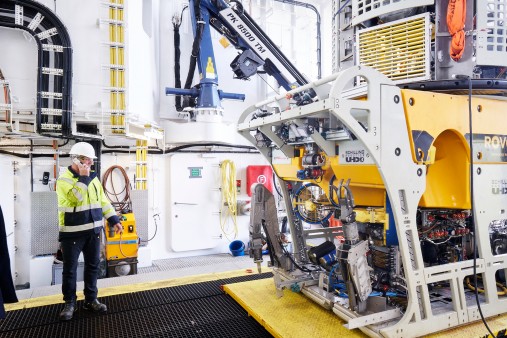
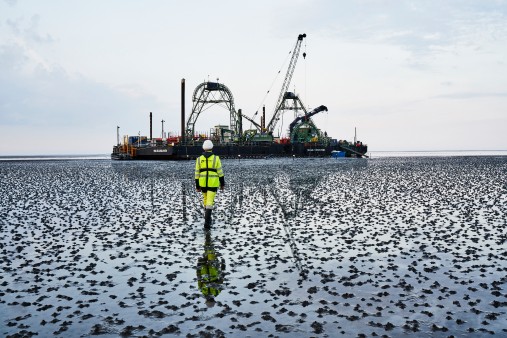
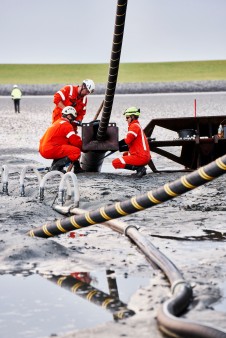
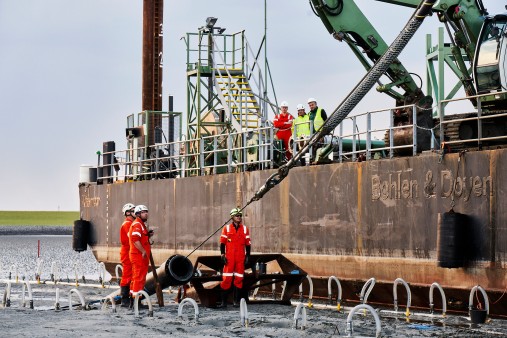
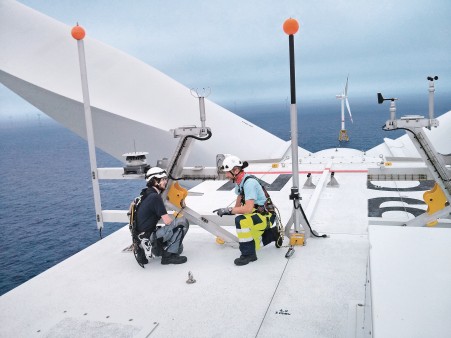
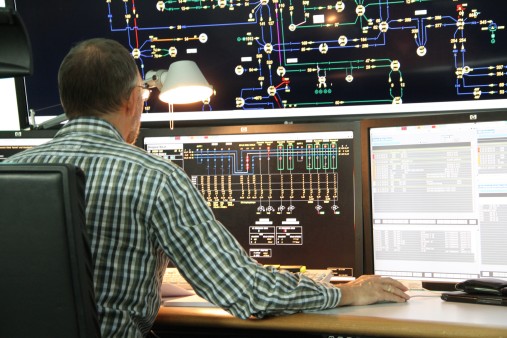













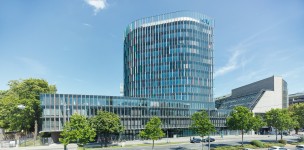
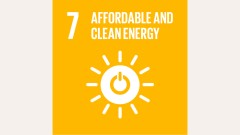
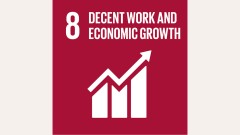
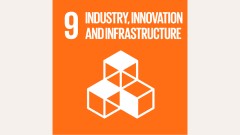
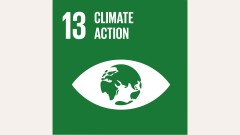
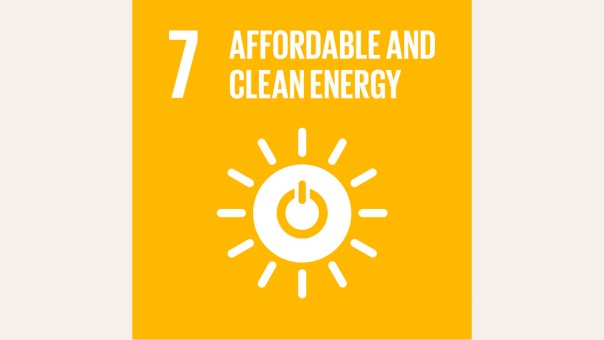
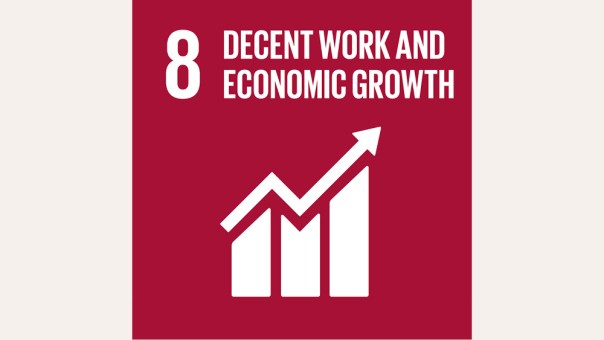
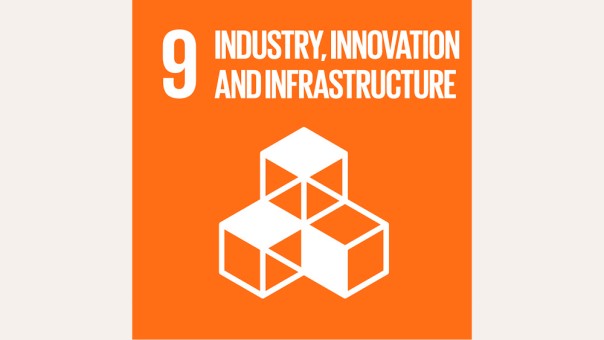
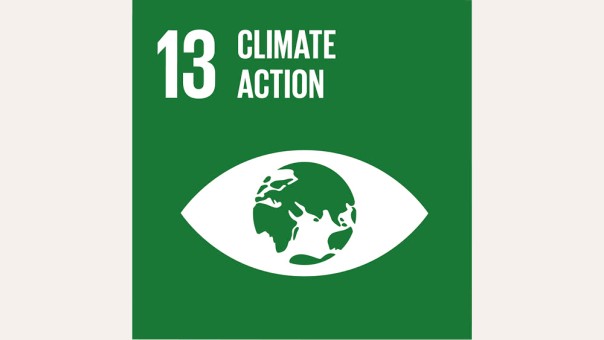
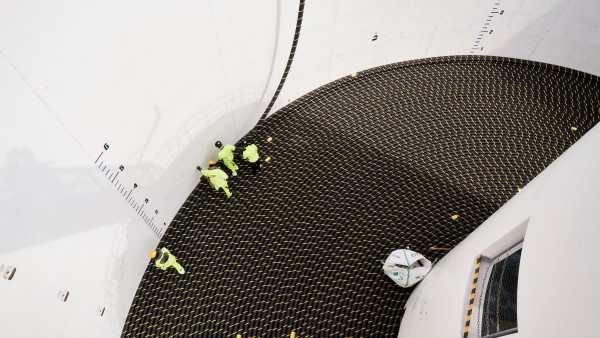
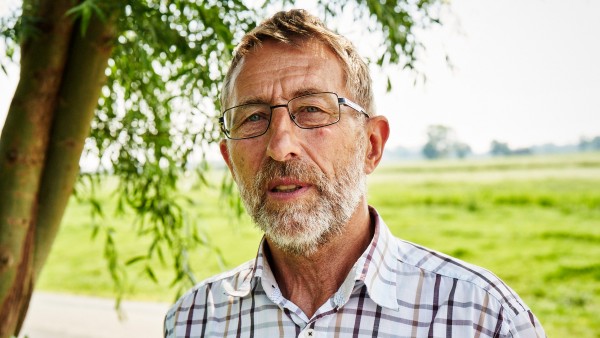
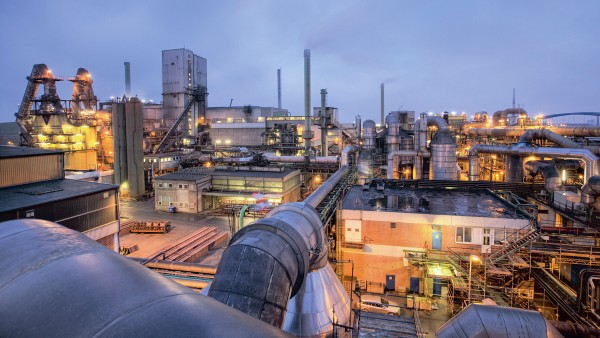
Data protection principles
If you click on one of the following icons, your data will be sent to the corresponding social network.
Privacy information